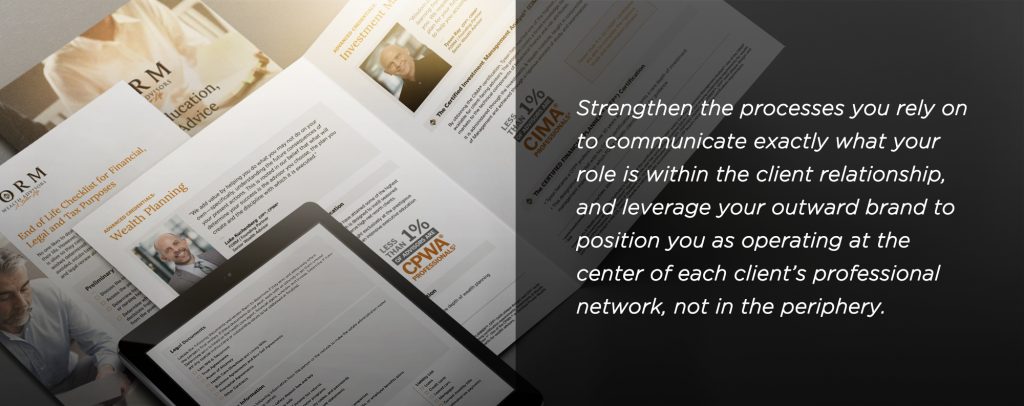When life happens, what happens next?
Many wealth management firms like to say they “quarterback” their clients’ financial services, guiding them through every wealth-related decision from education planning to estate taxes. This is the hallmark of professionals in the high-net-worth space.
It’s also an excellent way to deliver consistent value, stay top of mind, and garner referrals—which is why so many advisors strive to fill that role in their clients’ lives.
But how do you make sure clients really see you that way?
Think about when a typical client brings you into the conversation, because it can say a lot about the role you play in their financial life. For example, what happens when a client of yours experiences a major life event, like a death in the family? Is it natural for them to reach out to you in the immediate aftermath, or would your services come into play later on?
They might connect first with their lawyer, accountant, and even real estate agent, before getting in touch with you to discuss their investments. Or they’ll make you their first call, so that your team can contact and coordinate all the other professionals who need to be involved. You might even facilitate family conversations and help coach the next generation about financial management and responsibly stewarding family wealth.

In other words, if you find that you do get those early calls, then you’re likely providing a service that’s of great value. And you should ensure that value is readily apparent to the types of individuals you’re trying to reach.
If not, consider the ways you might change that perception. Strengthen the processes you rely on to communicate exactly what your role is within the client relationship, and leverage your outward brand to position you as operating at the center of each client’s professional network, not in the periphery.
